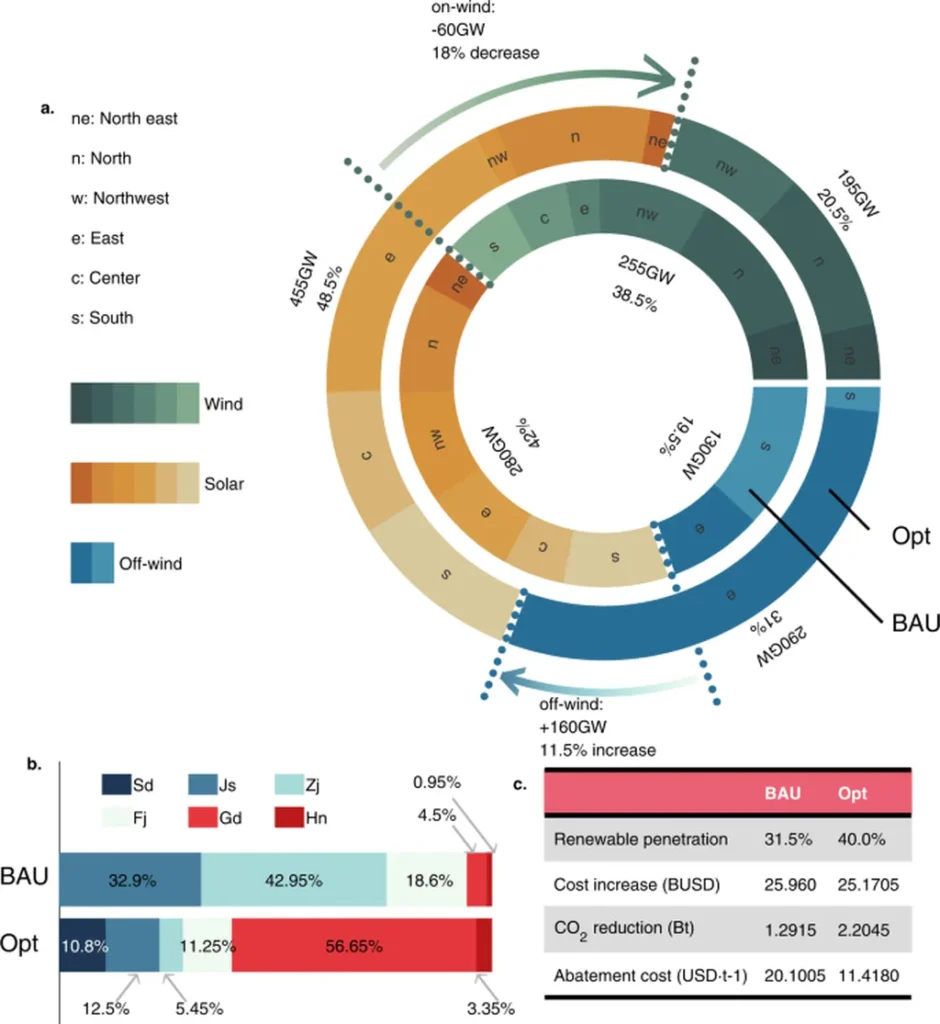In the rapidly evolving landscape of renewable energy, China is making significant strides in offshore wind power, but the sector faces substantial challenges in grid integration and fiscal sustainability. A groundbreaking study published in the journal *Energies*, titled “Multi-Market Coupling Mechanism of Offshore Wind Power with Energy Storage Participating in Electricity, Carbon, and Green Certificates,” offers a promising solution to these issues. Led by Wenchuan Meng of the Energy Development Research Institute at China Southern Power Grid, the research proposes a novel multi-market coupling model that could revolutionize how offshore wind power is integrated into large-scale grid networks.
The study addresses the inherent intermittency and volatility of wind power, which have historically posed significant hurdles to grid stability and government budgets. By integrating energy storage systems with offshore wind power, the researchers have developed a sophisticated model that optimizes participation in electricity, carbon, and green certificate markets. This approach not only maximizes power revenue but also enhances wind power penetration and overall profitability.
“Our model coordinates offshore wind power generation, thermal power dispatch, and energy storage strategies to create a more stable and economically viable energy system,” explained Meng. “By incorporating carbon and green certificate markets, we can significantly reduce the fiscal burden on governments and improve the overall sustainability of offshore wind power.”
The research introduces a day-ahead electricity market optimization model that maximizes revenue by strategically managing energy storage charging and discharging. Additionally, it develops optimization models for carbon and green certificate markets, quantifying various economic benefits and market dynamics. To validate the model’s effectiveness, the researchers compared it against a gradient ascent-optimized game-theoretic model and a double auction mechanism. The results were impressive, with the proposed model increasing market revenues by 17.13% and 36.18%, respectively.
The implications of this research are far-reaching. By coupling multiple markets, the model not only enhances the commercial viability of offshore wind power but also provides a framework for reducing government subsidies and promoting sustainable energy practices. “This approach has the potential to reshape the energy sector by creating a more integrated and efficient market structure,” said Meng.
As China continues to pursue its dual-carbon strategy and related policies, the findings of this study could play a crucial role in shaping the future of renewable energy. By optimizing the integration of offshore wind power with energy storage and multi-market participation, the energy sector can achieve greater stability, profitability, and sustainability. The research, published in *Energies*, offers a compelling vision for the future of energy markets and underscores the importance of innovative solutions in addressing the challenges of renewable energy integration.

